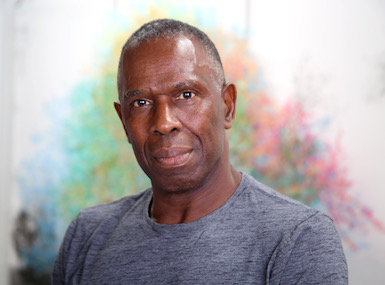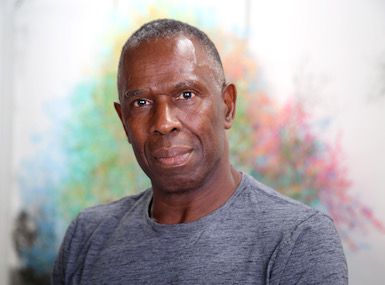[ad_1]

Charles Gaines.
FREDRIK NILSEN/COURTESY HAUSER & WIRTH
Charles Gaines has left Paula Cooper Gallery in New York and Susanne Vielmetter Los Angeles Projects for worldwide representation by Hauser & Wirth, which has locations in New York, Los Angeles, London, and Hong Kong as well as Zurich and Gstaad in Switzerland and Somerset, England. Gaines will retain representation by Galerie Max Hetzler in Berlin.
The subject of a survey show titled “Charles Gaines: Gridwork 1974–1989” at New York’s Studio Museum in Harlem in 2014 and the Hammer Museum in Los Angeles the following year, Gaines lives and works in L.A., where he also teaches at the California Institute of the Arts.
Gaines’s work tends toward analytical grids and systemizations of sound. His most recent show at Paula Cooper, which ran this past May into June, featured a new series of portraits of historic thinkers distilled down to data points on pixellated grids and layered atop one another in a sequence of wall works, such that the arrangement doubled as a sort of intellectual history starting with Aristotle and including Karl Marx, Michel Foucault, Malcolm X, bell hooks, and others under the collective title “Faces 1: Identity Politics.” Another work in the same show translated speeches by James Baldwin and Martin Luther King, Jr. into musical notation that was performed by an orchestra for a recording that was played through speakers.

Charles Gaines, Numbers and Trees: Central Park Series IV: Tree #7, Maria, 2017, at ICA Miami.
COURTESY ICA MIAMI
Another work of his, currently on view at the Institute of Contemporary Art in Miami features gridded abstractions of pictures of trees in New York’s Central Park. “I use systems in order to provoke the issues around representation,” Gaines once said of such work.
Earlier this year, Gaines curated “Terry Adkins: The Smooth, The Cut, and The Assembled” at Lévy Gorvy gallery in New York, in tribute to the late sound-sculptor, and as noted by ARTnews this spring, he is at work with the writer and poet Fred Moten on an opera about Dred Scott, the enslaved African-American man who sued for his freedom in 1857.
In a statement, Marc Payot, a director at Hauser & Wirth, said, “Charles Gaines’ position in the evolution of conceptual art and the emergence of the Los Angeles art scene have very special resonance in the context of our program. From the 1970s, he was one of the few African-American conceptual artists to focus on abstraction and aesthetics as means to explore ideas about perception, objectivity, and relationships. His influence is deep and profound. And his work connects in provocative ways to that of such seemingly disparate fellow artists as Jack Whitten, Larry Bell, Zoe Leonard, and Mark Bradford. As we continue to explore critical bridges between generations, deepen our commitment to women artists and artists of color, and introduce artists to new and more diverse audiences internationally, it’s an honor to welcome Charles to our Hauser & Wirth family.”
Gaines’s first show with his new gallery will be sometime next year in Los Angeles.
[ad_2]
Source link

